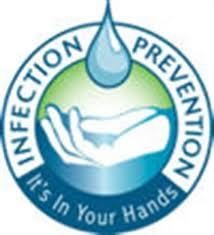05/14/2013 // Concord, CA, USA // LifeCare123 // Greg Vigna, MD, JD, Joe Motta, JD // (press release)
Medical Perspective:
Nosocomial (hospital acquired) MDR Acinetobacter exposes health care facilities to significant liability in cases that directly or indirectly cause death, organ failure, or disability. As a clinician and an attorney my perspective related to this issue raises two questions related to a nosocomial MDR Acinetobacter that exposes facilities to liability. The first relates to sporadic infections, which occur within the walls of a hospital. The second relates to outbreak management and issues related to informed consent.
An unfortunate consequence of chronic conditions such as decubitus ulcers, patient with chronic ventilator dependence, and chronic indwelling catheters in patients with spinal cord injury or traumatic brain injury is the need for long-term or frequent course of IV antibiotics that increases the risk of MDR-Gram negative infections from Acinetobacter, Enterobacter, and Pseudomonas. By the nature of hospitals admitting patients with these organisms raises the possibility of cross-contamination and infection of other patients within a facility. This can lead to sporadic infections or an outbreak within the walls of a hospital.
Any patient with a MDR nosocomial infection may have a cause of action against a health care facility. In cases that are sporadic a plaintiff will need to show that the conduct of the hospital was negligent regarding their management of MDR-organism. Here, hospitals will simply need to show that their conduct complied with policies and procedures to prevent MDR nosocomial infections and that policy and procedures was a determined to be a reasonably prudent procedure as determined by the court. A reasonable version of the Maximum Isolation Precautions discussed in my prior article, Part 4: MDR Acinetobacter- The Johns Hopkins Protocol, should adequately protect a facility from liability. Hospitals that have been slow to instigate these protocols are exposing patients to significant health care risk as well as significant liability.
Outbreak management raises two issues related to both negligence and informed consent. Any facility with an outbreak involving a particular gram negative organism infecting patients in a single unit of the hospital suggest that there has been a breakdown in infection control policies of that particular unit. Infected patients should be cohorted (segregated) from non-infected patients. A version of the Johns Hopkins Maximum Isolation Protocol should be rapidly mobilized. The unit should be closed to new patients; infected patients should be cohorted from uninfected patients. Adequate disinfection by way of terminal cleaning and serial cultures of uninfected patients should be made to determine the success of the interventions in preventing infection. When there is an absence of positive cultures in previously infected patients the unit may reopen.
An outbreak involving multiple units of the hospital suggests that there is a systemic breakdown of the hospital infection control mechanism. In this situation the hospital must act appropriately to meet this infection control breakdown. The facility must close effected units to new patients. Infected patients should be cohorted (segregated) within units from the noninfected patients. Terminal cleaning according to Johns Hopkins Maximum Isolation Protocol should be instituted and the Infection Control Department should attempt to find the source of the infection. All equipment that must go into and out of the effected units must be terminally cleaned according to Johns Hopkins Protocol. Once the unit is free from new cases and all rooms are terminally cleaned these units can again be opened. In outbreaks involving multiple units there are significant issues regarding informed consent. Reasonably prudent action of a hospital with an outbreak involving multiple units might consist of either involving temporary closing its doors to new patients until the outbreak is controlled or providing informed consent to new patients being admitted.
Nosocomial infections do occur and inherently they are a risk to every hospitalized patient. Because of the increased resistance of gram-negative organism such as Acinetobacter there is an increasing risk of death, kidney failure, hemolytic anemia, and organ failure related to the use of toxic drugs to treat these infections. Hospitals across the country must institute reasonable infection control policies to meet this challenge to not only protect their patients but also reduce the risk of liability.
Legal Perspective:
A hospital will breach its duty of care if it does not use reasonable care when providing care to its patients. A hospital must have adequate facilities, provide policies and procedures, and qualified personnel necessary for treating its patients. In the case of infection control issues there becomes issues regarding a breach of the duty to maintain adequate facilities to reduce injuries from nosocomial infections. Also, there may be a failure to institute and follow adequate policies and procedures related to infection control issues. Nosocomial infections can have serious implications on the health of patients but often does not mean that there is poor medical care. Each case must be analyzed individually. In the case of MDR gram-negative infections there should be a proactive hospital policy and procedures that meets this health care hazard. A hospital must have policies and procedures that are proactive, evaluating each MDR gram-negative infection both individually and in context with other infections throughout the facility. Unit specific outbreaks must be handled appropriately and multiunit outbreaks within the walls of a hospital may require diversion of patients to other facilities as well as informed consent on admission.
Source: LifeCare123.com
Media Information:
Address: 1401 Willow Pass Road, Concord, CA 94520
Phone: 888-990-9410
Url: Lifecare Solutions Group







